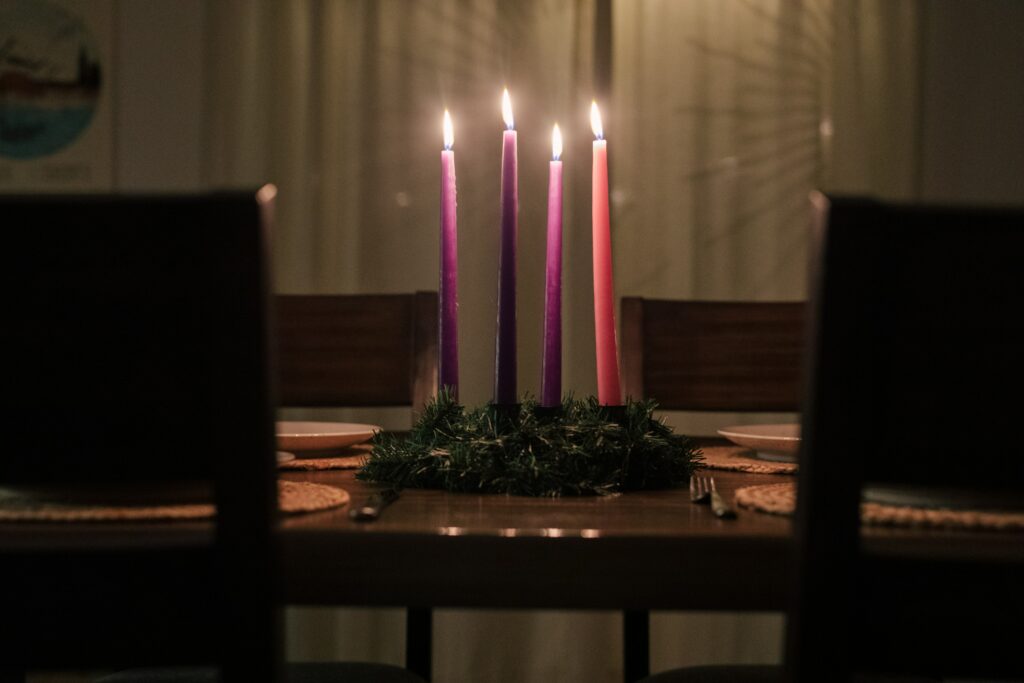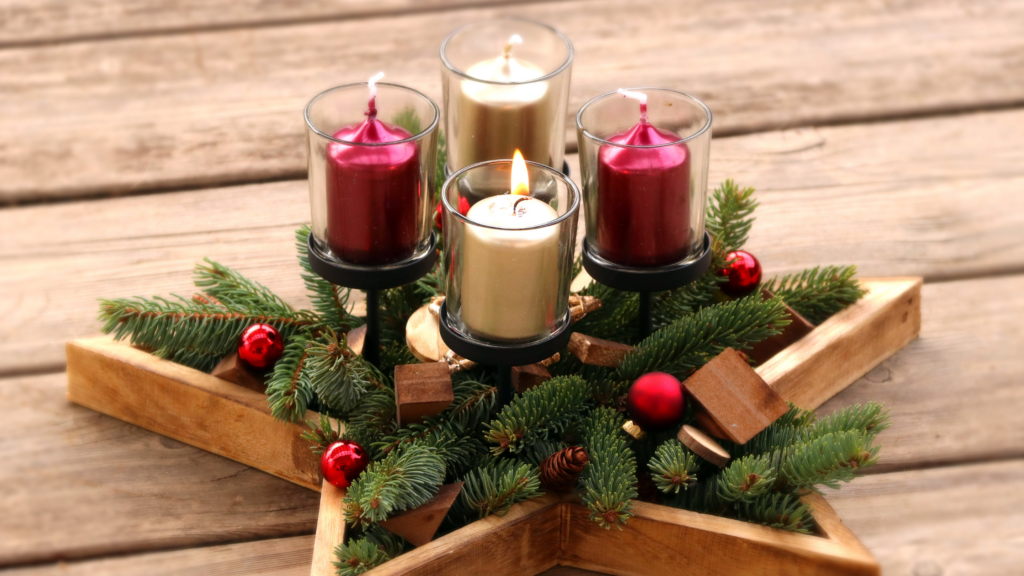Perhaps it was the strong German background we had growing up, and the customs surrounding Advent that our parents kept alive, but along with the change in weather in the Upper Midwest came a distinct love of celebrating the liturgical seasons.
Back then, we had simple ways of winding down the liturgical year, usually tied to Thanksgiving, and taking time at dinner (we called it “supper”) to include special mention in our meal prayers of persons and events we were thankful for. Following the Family Rosary at night Dad would ask each of us kids to say something special to God and, if there was a need, to someone else in the family. In the days after Thanksgiving, the prayers and conversation turned to Advent, our time of preparing for Christmas.
Preparing the space
A simple homemade Advent wreath on the buffet near the kitchen table held candles that one of us older kids could light and lead the prayers from a little booklet. Some years it was, instead of four, a single purple candle we took turns lighting, and some years it was a small wreath one of us had made at school and brought home, where a paper flame could be clipped to a paper candle. Small branches from one of our pine trees or the evergreens added the color – and scent – of the season too.
The small nativity set was brought out and in the second week of Advent, was put up on the other end of the buffet, empty except for the manger itself. Each day we could add one piece of straw to the manger or the floor of the stable as we said what we had done during the day to get our hearts heard for Jesus to come.
Some days there wasn’t much straw being added — fights still broke out among us kids and we weren’t always so angelic! Sometimes we could instead move closer to the manger one of the animal statues that were standing in preparation in other rooms of the house.
In the days after Thanksgiving, the prayers and conversation turned to Advent, our time of preparing for Christmas.
Moving closer
During the third week of Advent the statues of Mary and Joseph appeared in the next room and we could move those closer each day. By the time we were finally lighting the fourth candle on the wreath, the statues were pretty much somewhere in the kitchen, and the doors to the family living room were closed so that secret preparations could be made there by Mom, Dad and the older one or two kids.
The younger ones knew they could not peek or Santa and the elves would be watching, ready to cancel out some gift we could have otherwise received.
Some evenings and on weekends Mom showed us how to make decorations for the Christmas tree and for the buffet-top small bare branch that would become the manger tree. The older kids could help the younger ones and there was less fighting those final Advent days. We knew…
Learn more
We’re going to go much deeper into how to use the liturgical year as your primary formation tool in our next webinar. Registration is free, and we’d love to have you join us.









